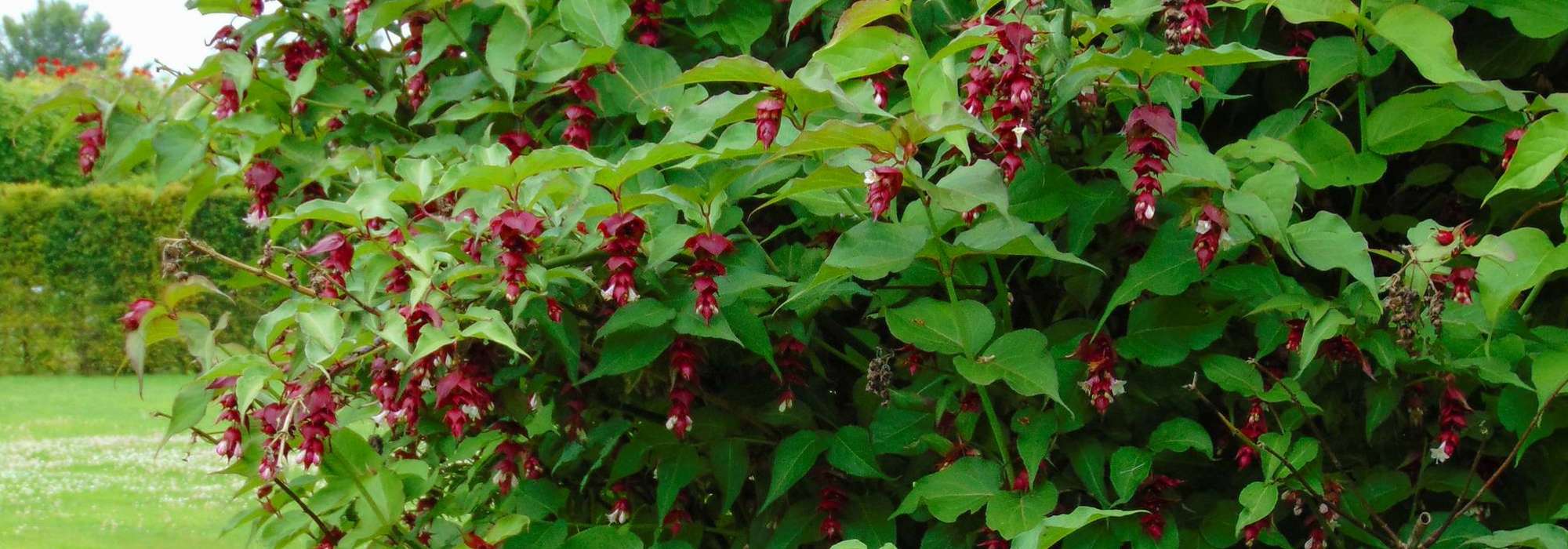
Leycesteria, pheasant tree: planting, pruning and care
Summary
Leycesteria in a nutshell
- Leycesteria is a fast-growing, hardy Himalayan bush that is very easy to grow.
- It has many advantages, such as the lemon green or purple foliage of some cultivars, a long flowering period with delicate clusters of purplish white flowers followed by decorative and edible berries.
- Its hollow, striate stems have a bamboo-like appearance, forming a beautiful bush, up to 1.8 m high and 1.5 m wide.
- It tolerates all types of soil and can be placed in full sun or partial shade, either as a specimen, in a border, or as a free-standing hedge.
A word from our expert
Leycesteria, known as the “pheasant tree” or “Himalayan honeysuckle“, which can be described as being halfway between a bush and a perennial, belongs to the Caprifoliaceae family, just like honeysuckle. It has a bushy habit reaching up to 2 m in all directions, but its stems are hollow, relatively flexible, with a limited diameter, and the tips die back with the onset of cold weather. This behaviour necessitates pruning at the beginning of spring to give it a fresh look, when the young shoots of vibrant green contrast with the dead parts.
The bush is appealing for its vigour and the freshness inspired by its lush jade or golden foliage. The appearance of its hollow stems with swollen nodes resembles that of bamboo. It boasts a graceful flowering of small white and purple chains that continues from June until the end of summer. But the qualities of this bush do not stop there. The white flowers almost simultaneously give way to wine-coloured berries, accompanied by purple bracts that adorn the branches for a good part of winter. Clearly appreciated by pheasants, hence its name pheasant tree, they can be consumed to enhance meats.
In any soil, reserve a spot in full sun or partial shade for this fast-growing bush that occupies a certain volume: 1.80 m high by 1.50 m wide. Plant it by burying the root ball a few centimetres deep as it is a suckering species, and do not hesitate to cut back the branches at the end of winter.
Description and Botany
Botanical data sheet
- Latin name Leycesteria formosa
- Family Caprifoliaceae
- Common names Pheasant tree, Himalayan honeysuckle
- Flowering between June and October
- Height between 1.20 and 2 m
- Sun exposure sun or partial shade
- Soil type cool, humus-bearing, even calcareous
- Hardiness Excellent (-20°C)
The genus Leycesteria consists of bushes related to honeysuckle, which include six species. The species formosa is the most commonly planted in our gardens. In the wild, it grows at altitudes between 2000 and 3000 m from Kashmir to Yunnan and in western Sichuan, near waterways, in forests and thickets. Its nickname “Himalayan honeysuckle” comes from its origin but also from the fact that the bush belongs to the same family as honeysuckle: the Caprifoliaceae.
However, the species Leycesteria crocothyrsos has become very common in the Scottish countryside, although it is native to Assam, a region in the far north-east of India. It is recognised by its clusters of yellow flowers reaching 18 cm in length and its highly veined leaves, pubescent on the edges.
The green, hollow stems, equipped with nodes, resemble bamboo but the habit is much more flexible. They form a rounded clump of 1.80 m high and 1.50 m in diameter, sometimes more, with stems that emerge from the ground and branch out over the years if the climate permits. The semi-evergreen to deciduous foliage is opposite, very bright especially in spring, jade green or golden tinged with purple in the case of Golden Lantern. The latter is perfect for illuminating a dark corner, even under the branches of an oak, for a good part of the season. The autumn coloration proves to be just as attractive as the spring coloration unless frost scorches the foliage. The lamina, which can reach 20 cm in length, is lanceolate, ending in a long, narrowed tip. Purple Rain is appreciated for its purple stems, which contrast with the jade-coloured foliage and its long-lasting dark purple flower clusters.

Leycesteria formosa – botanical illustration
Flowering begins in July and continues throughout the summer. Small white and purple chains, 10 cm long, emerge from the axil of the leaves and hang gracefully along the branches. The white corolla, made up of 5 fused petals, forms a funnel of nearly 1 cm, while the calyx produces 5 very unequal and discreet elongated sepals, tinged with pink. The prominent and encompassing dark purple bracts truly highlight the flowers gathered in tiered involucres, giving the clusters a lantern-like appearance.
The flowers give way to shiny wine-coloured berries topped with a purple pistil that adorn the branches for a good part of the winter. The berries, measuring 0.5 cm, can be used to enhance meats. As its name suggests, the berries with a pronounced caramel taste after over-ripening, constitute in October, a delicacy for pheasants and birds in general.
The flowering stems are used to create charming bouquets, interesting for both foliage and flowering. Remember to incise the base of the stems for 5 cm to prevent them from drying out and remove all leaves that touch the water in the vase.
The Leycesteria was named in honour of William Leycester (1775-1831), a British judge passionate about botany who settled in Bengal, appointed president of the Agricultural and Horticultural Society which aimed to promote the fruits and vegetables of the region during the British occupation. The species name formosa refers to its beauty.

Evolution of an inflorescence of Leycesteria formosa.
The main varieties of Leycesteria
There are still relatively few cultivars of Leycesteria formosa. ‘Golden Lantern’ is one of the most popular. ‘Purple Rain’ features bright red fruits with young purplish foliage, while ‘Jealousy’ offers a striking contrast of chartreuse yellow and purple even in autumn.
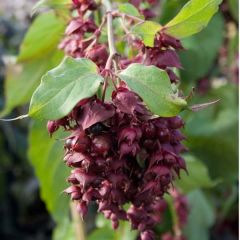
Leycesteria formosa Purple Rain
- Flowering time august to november
- Height at maturity 2 m
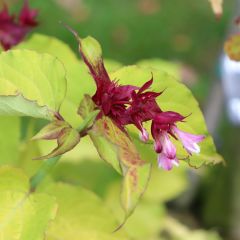
Leycesteria formosa Golden Lanterns
- Flowering time august to november
- Height at maturity 2 m
Discover other Leycesteria - Himalayan Honeysuckle
View All →Available in 1 sizes
Available in 3 sizes
Available in 2 sizes
Available in 1 sizes
Planting
Where to plant Leycesteria?
The Leycesteria grows in any type of soil but prefers well-drained and not too dry to fresh and humus-bearing conditions. It tolerates not too scorching sun for golden foliage, as well as partial shade. It is very hardy (-20°C) but the foliage may get scorched by frost. Take advantage of the brightness of its foliage, its vigour, and its drought, pollution, and salt spray tolerance to brighten up a neglected, dark, overly shaded area or to hide an unsightly wall.
However, be cautious of its tendency to sucker and self-seed in mild and humid climates like that of Brittany.
Container cultivation is also possible, but keep in mind that it will be more vulnerable than in open ground if winters are harsh.
When to plant?
Plant the pheasant tree preferably in autumn to ensure deep rooting before facing summer drought.
How to plant?
- Soak the root ball in a bucket of water to thoroughly moisten it.
- Dig a planting hole, 50 cm in all directions or a trench in the case of a hedge.
- Add manure or decomposed compost if the soil is sandy.
- Place the plant in the planting hole by burying the root ball a few centimetres to encourage suckering which helps to reconstitute the clump.
- Replace the soil and lightly firm it down.
- Water generously.
- Spread a layer of mulch at the base to maintain good moisture around the roots. This will also limit the growth of weeds.
Recovery is easy and quick, requiring only monitoring of watering during the first 2 years following planting.
Care
After a harsh winter, the hollow stems of the pheasant tree may die back completely. However, there is no need to worry, as new shoots will emerge in spring if the stump has been kept warm all winter under a thick mulch of fallen leaves. It is therefore better to leave the stems in place on the bush throughout the dormant season, not only to enjoy the graphic quality of the stems but also to enhance the protection of the stump against frost. In early spring, around March-April, when the foliage starts to appear, simply remove the weak and blackened stems and shorten the vigorous stems to encourage regrowth from the base. If the tips have not blackened, you can still cut the stems back by half each spring to renew its shoots and retain only about ten stems per plant. A more severe pruning in spring would delay flowering.
Water regularly for the first two years, especially during warm and dry periods.
Add compost or fallen leaves as mulch in autumn.
This bush is not susceptible to diseases and pest attacks remain without serious consequences.
Propagating
The pheasant tree divides easily due to its tendency to produce suckers, but it can also be propagated by cuttings easily between March and September. Natural sowing is quite common, and the plant is fortunate to retain the golden character of the foliage, particularly in the cultivar Golden Lantern.
Propagation by cuttings
Prepare a pot deep by filling it with potting soil mixed with sand, or take your cuttings directly in the ground if it is light, after aerating it with a fork, then moistening it.
- Take a lignified or semi-lignified shoot 15 to 20 cm long from a shoot of the previous year or from a new shoot depending on the time of year.
- Remove the leaves on 2/3 near the base of the cutting, and trim the others to reduce the leaf surface area.
- Insert one cutting per pot to a depth of about 10 cm, then gently firm the soil around it to eliminate air pockets.
- Place the culture in partial shade, keeping the substrate moist but not waterlogged.
- Protect the young plants under a frame or a winter cover during the winter.
- Wait until the following autumn to plant in the final location.
Sowing
Sow in autumn under a frame the harvested seeds, cleaned of the fruit pulp. Bury them 1 cm deep and keep the soil moist. You will transplant the seedlings in spring.
Uses and associations
With its flexible stems, the pheasant tree forms an elegant bush in isolation that catches the eye with its foliage and long-lasting flowering. Its rapid growth also allows for the creation of decorative hedges that attract birds until December.
It is one of those essential for creating spring colour displays solely with foliage. While Japanese maples take centre stage in acidic soil with colours ranging from shrimp pink like Acer palmatum ‘Bloodgood’ to golden yellow like ‘Orange Dream’, the pheasant tree makes a statement with its golden or jade green luminous mass from April-May and throughout the summer, regardless of soil type. The young stems of Leycesteria formosa Golden Lantern produce beautiful orange-green hues in spring. This bush has the advantage of retaining this brightness almost until leaf fall, serving as a backdrop for its purple lanterns. Choose a fairly open location that allows sunlight to create transparency effects but is sheltered from cold drafts that can scorch young tissues. Pair the pheasant tree with the golden mock orange, Philadelphus coronarius ‘Aureus’, which also offers an abundant fragrant white flowering in May-June even in partial shade. It pairs just as well with plants that have purple foliage like Physocarpus opulifolius ‘Diabolo’ with its charming country-style looks, the Harlequin barberry with its pink and purple speckled foliage, or even the sand cherry.

An example of pairing: Cotinus coggygria ‘Royal Purple’, Leycesteria formosa ‘Golden Lanterns’, Berberis thunbergii ‘Rosy Glow’, Philadelphus coronarius ‘Aureus’.
You can also pair it with current flowerings, which offers a wide choice given the duration of its flowering that runs from early summer to autumn. It will find its place in a flowering hedge or at the back of a shrub bed or perennials alongside white or light pink bush roses, Mexican orange blossom, hydrangeas, and Sedum spectabile mixed with the light culms of Angel hair.
To form a game hedge designed to attract wildlife while having high ornamental value, use berry bushes with bright colours like Clerodendron trichotomum with its pink and blue bouquets, the European spindle with its pink and orange bishop’s hats, Callicarpa adorned with purple pearl beads, viburnum with its blue reflections, and the physocarpus with its pink bladders… Add small trees to provide relief such as the ornamental apple ‘Evereste’, elder, or the rowan (Sorbus aucuparia), appreciated for its finely dentate compound foliage turning golden yellow in autumn and its clusters of vermilion berries appearing from July.
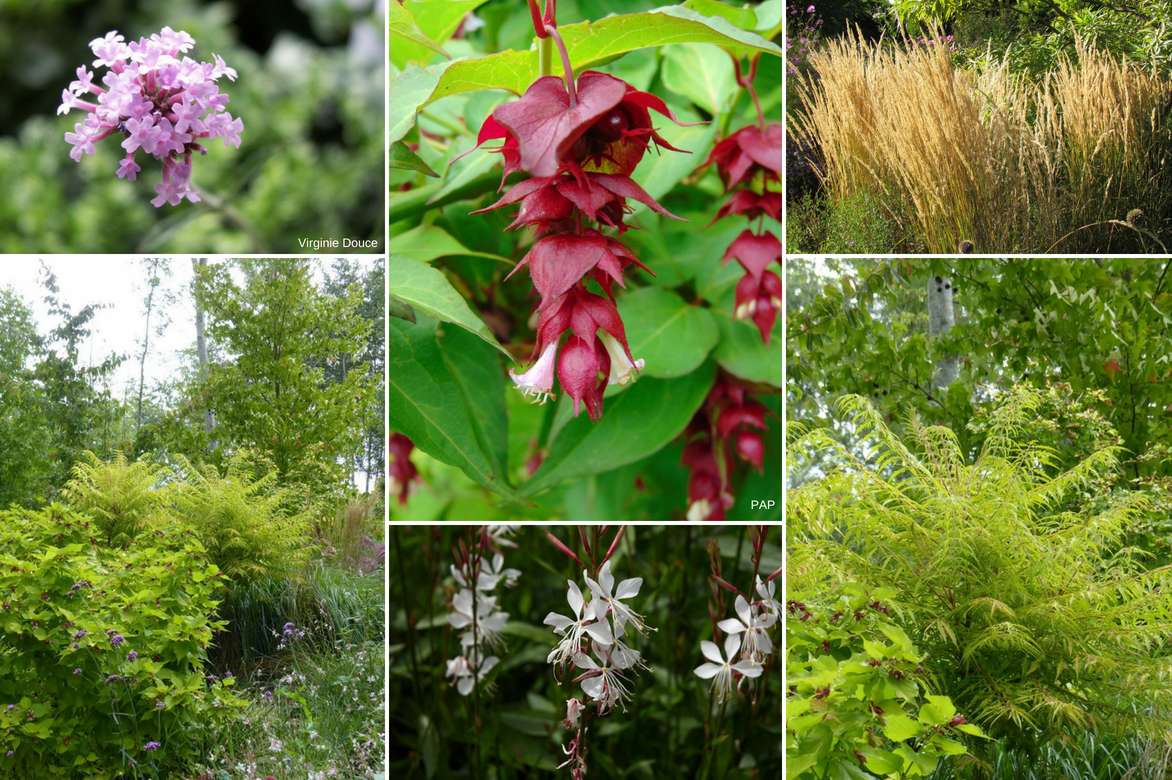
An example of pairing in a summer bed: Verbena bonariensis, Leycesteria formosa ‘Golden Lanterns’, Gaura lindheimeri ‘Snowstorm’, Calamagrostis ‘Karl Foester’, Rhus typhina ‘Tiger Eyes’.
- Subscribe!
- Contents
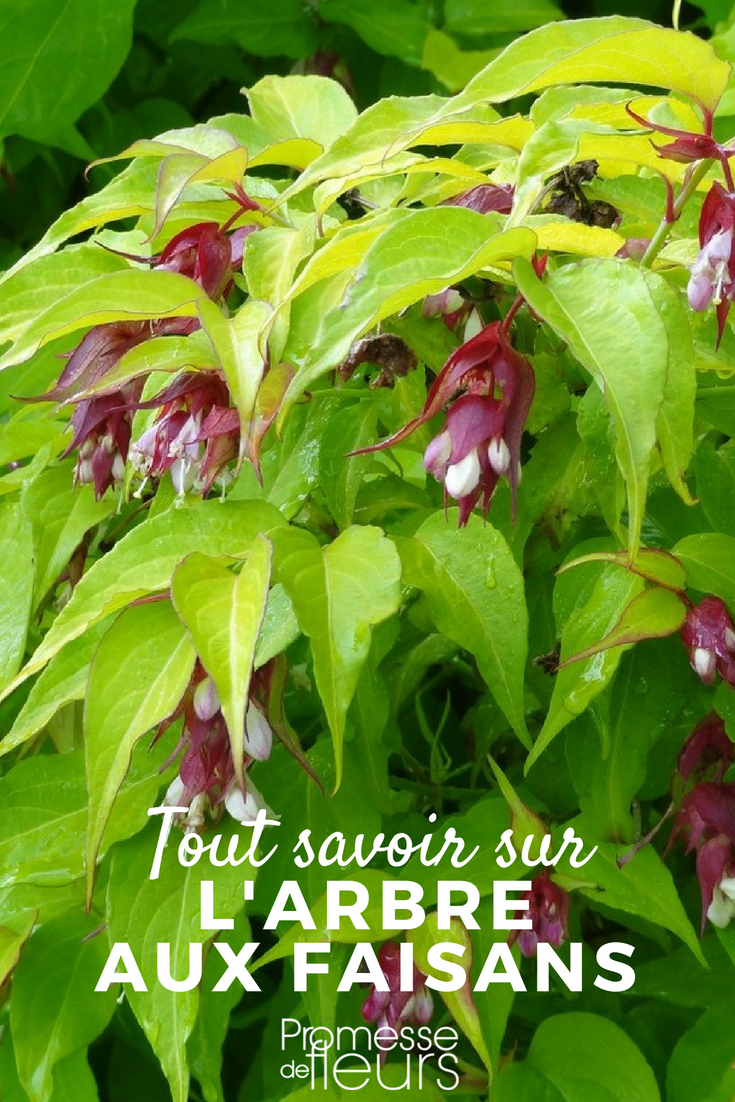
































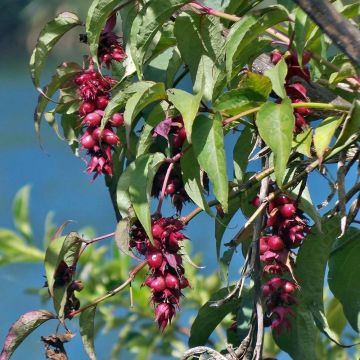

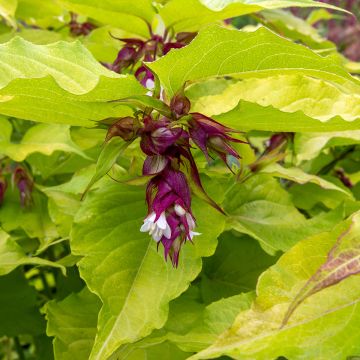
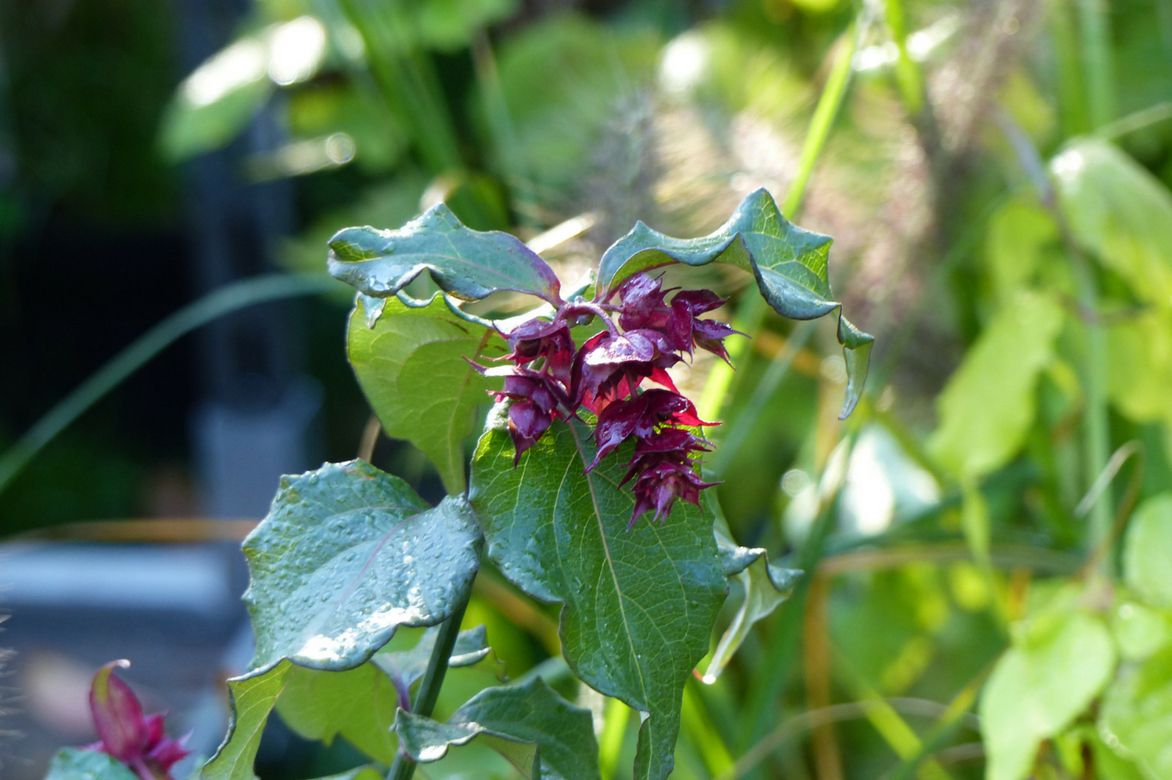
Feedbacks